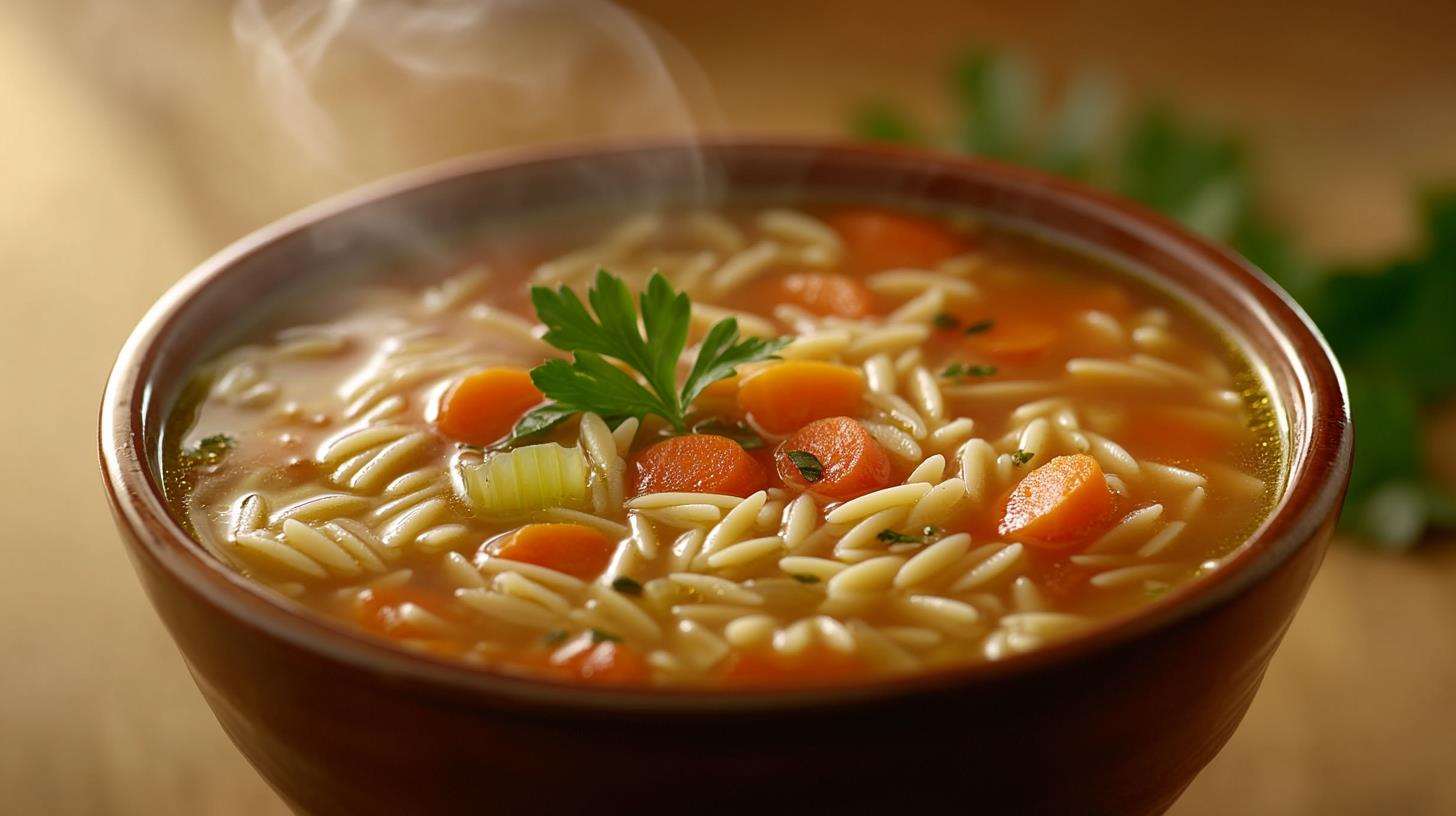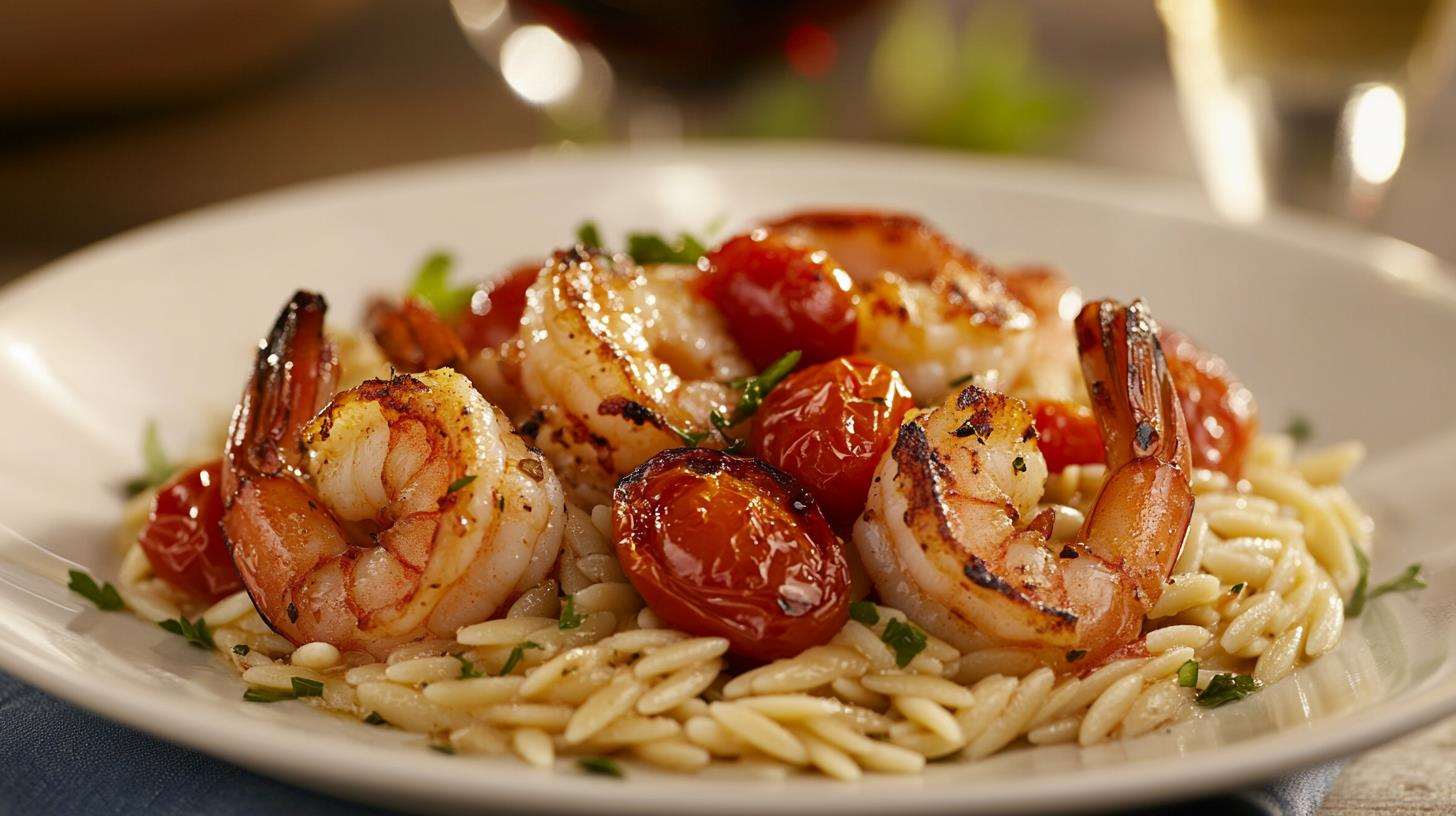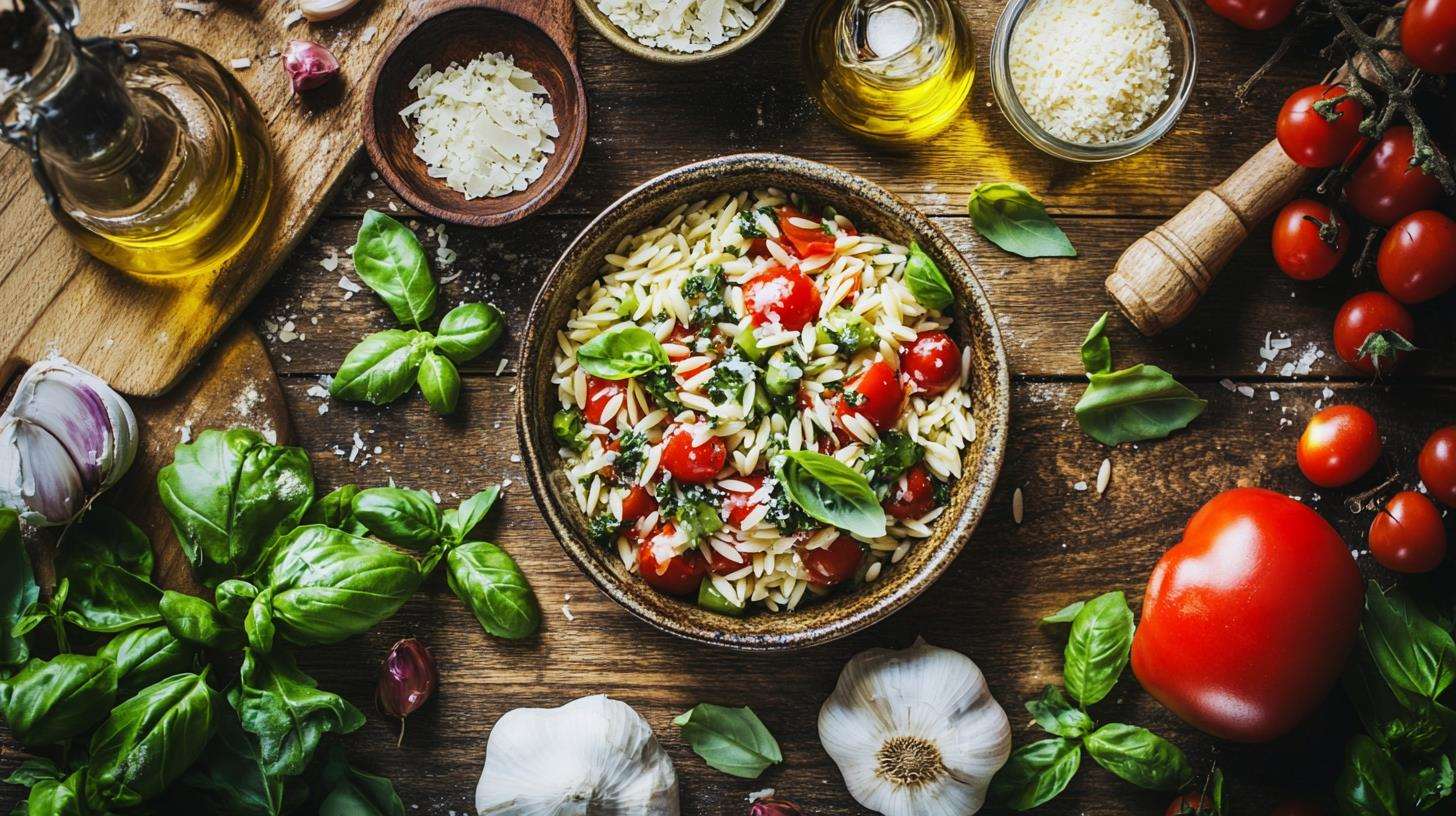Orzo is a versatile little ingredient, often mistaken for rice but carrying the heart and soul of Italian pasta. While it has gained global popularity in various recipes, its role in Italian cuisine sparks curiosity. Do Italians eat orzo? And if they do, how does it fit into their rich culinary traditions? This article dives deep into the origins of orzo, its place in Italian and global kitchens, and the techniques that make it shine. By the end, you’ll discover everything from its cultural significance to its versatility in recipes across the globe.
Introduction to Orzo
What is Orzo?
Do Italians eat orzo? The short answer is yes—and for good reason! Orzo, derived from the Italian word for “barley,” is a type of pasta that resembles large grains of rice. This versatile ingredient is made from durum wheat semolina, giving it the distinct chewy texture that pasta lovers adore.
In Italy, orzo is a kitchen staple. Known for its ability to absorb flavors, it’s widely used in recipes ranging from light salads to hearty soups. Its rice-like shape makes it ideal for dishes that require smaller, delicate pasta. But despite its appearance, orzo isn’t rice—it’s 100% pasta.
Origin of Orzo and Its Connection to Italy
Wondering, Do Italians eat orzo regularly? Absolutely! Orzo has deep roots in Italian cuisine, tracing back to ancient times when barley grains were a staple in the Mediterranean diet. Over time, Italians began crafting pasta to resemble barley, leading to the creation of orzo as we know it today.
This pasta holds a special place in Italian gastronomy. Traditional recipes like minestra con orzo (a comforting soup) or insalata d’orzo (a refreshing pasta salad) showcase how orzo complements Italy’s vibrant, fresh ingredients. Its compact size makes it perfect for absorbing the flavors of broths, dressings, and sauces, ensuring each bite is rich and satisfying.
Whether you’re cooking an authentic Italian dish or a fusion recipe, orzo proves to be a versatile and timeless ingredient. As you’ll discover throughout this article, Italians not only eat orzo, but they’ve elevated it to an art form.
The Role of Orzo in Italian Cuisine
Traditional Italian Dishes Featuring Orzo
Do Italians eat orzo? Absolutely, and they’ve been enjoying it for centuries. This versatile pasta is featured in some of the most comforting traditional dishes in Italian cuisine. One iconic recipe is minestra con orzo, a hearty soup where orzo simmers with seasonal vegetables, beans, and flavorful broth. Italians love how orzo absorbs the broth’s rich taste while retaining its delightful texture.

Another classic preparation is insalata d’orzo, a chilled pasta salad combining orzo with fresh ingredients like tomatoes, cucumbers, and olives, all tossed in olive oil and lemon juice. It’s a popular summer dish that embodies the Mediterranean diet. Italians often pair orzo with basil or oregano, giving the salad a fresh and aromatic flair.
If you’ve ever wondered, Do Italians eat orzo in salads?—the answer is a resounding yes. These salads are a staple, especially during the warmer months when simplicity and freshness dominate Italian cuisine.
es, you might enjoy related inspiration in this complete guide to Parmesan Spinach Orzo.
Regional Variations in Orzo Usage in Italy
Across Italy, orzo’s use varies by region, reflecting the diversity of Italian cooking. In the north, orzo is often found in warming broths or soups, ideal for colder climates. Meanwhile, in southern Italy, orzo makes frequent appearances in seafood dishes, often tossed with shrimp, clams, or calamari.
Italians in some regions also bake orzo in the oven, creating casseroles layered with cheese, tomatoes, and eggplant. These baked orzo dishes are perfect for family gatherings or special occasions, blending regional flavors with orzo’s adaptability.
For those still wondering, Do Italians eat orzo in baked dishes? Yes, orzo’s small size and ability to blend flavors make it a favorite in both simple and elaborate recipes.
For a deeper dive into orzo’s unique qualities compared to other pastas, check out Why Orzo Is Different from Pasta: A Complete Guide.
Misconceptions About Orzo as “Rice”
Although orzo closely resembles rice, it is entirely different. Italians use it as pasta rather than a grain, incorporating it into a wide range of meals where rice might not fit. This distinction allows orzo to shine in ways unique to its texture and flavor.
So, the next time you hear the question, Do Italians eat orzo?, remember that this tiny pasta has a long-standing place in traditional and modern Italian cooking!
Orzo in Modern Italian and Global Kitchens
Contemporary Italian Dishes with Orzo
Modern Italian cuisine embraces orzo with creative twists that showcase its versatility. For instance, orzo risotto, known as orzotto, replaces Arborio rice in risotto recipes, offering a quicker preparation time without sacrificing the creamy texture. Italians have mastered using orzo in baked casseroles, combining it with rich tomato sauces, mozzarella, and vegetables like eggplant. These dishes are both comforting and satisfying, answering the question: Do Italians eat orzo? Yes, and they innovate with it in countless ways.
For a modern take, Italians often toss cooked orzo with olive oil, fresh basil, and cherry tomatoes. This simple yet flavorful dish highlights orzo’s ability to blend seamlessly with Italy’s staple ingredients.
Orzo in International Fusion Cuisine
Orzo’s appeal isn’t limited to Italy. Globally, chefs have adopted this small pasta, transforming it into fusion dishes that merge Italian traditions with international flavors. In Mediterranean cuisine, for example, orzo is toasted and paired with grilled lamb, chickpeas, or feta cheese, creating a vibrant, protein-packed dish. These adaptations show that while orzo originated in Italy, its potential knows no bounds.
In American kitchens, orzo appears in creamy soups, cold pasta salads, and even as a base for stir-fries. It absorbs bold flavors effortlessly, making it a favorite ingredient for busy weeknights. Whether it’s baked with cheese, used in Middle Eastern-style pilafs, or turned into a warm, comforting soup, orzo adapts beautifully.
So, do Italians eat orzo? Not only do they eat it, but their culinary traditions have inspired the world to do the same. Orzo’s global popularity stems from its versatility and the ease with which it pairs with fresh ingredients, making it an essential component in Italian and international recipes alike.
For a simple yet delightful orzo-based recipe, consider this Parmesan Spinach Orzo, which blends Italian simplicity with global appeal.
Cooking Techniques for Orzo
How Italians Cook Orzo
When it comes to orzo, Italians have perfected simple yet flavorful cooking techniques. The most common method is boiling orzo in salted water, similar to other pasta types. However, Italians often enhance the cooking process by adding a bay leaf or a drizzle of olive oil to the water, infusing subtle aromas into the pasta.
In soups like minestra con orzo, orzo is cooked directly in a rich broth filled with vegetables and sometimes meats, ensuring every bite absorbs bold flavors. For baked dishes, orzo is par-cooked and then mixed with ingredients such as fresh mozzarella, tomato sauce, or eggplant before going into the oven. These methods highlight orzo’s versatility in both traditional and modern Italian recipes.
Do Italians eat orzo? Absolutely, and they enjoy it in dishes that are easy to prepare yet rich in flavor.
If you’d like to explore a quick and delicious recipe, check out this Parmesan Spinach Orzo for an Italian-inspired dish that’s easy to whip up.
Pairing Orzo with Italian Ingredients
Italians know that orzo is at its best when paired with high-quality, fresh ingredients. Olive oil, garlic, and grated Parmesan are classic companions, creating a simple yet delicious dish. For more elaborate recipes, orzo is often combined with roasted vegetables, sun-dried tomatoes, or seafood like shrimp and mussels.

In baked casseroles, orzo partners beautifully with eggplant, ricotta, and herbs like oregano. Italians also use orzo to create risotto-style dishes, giving it a modern twist. Once again, the answer to Do Italians eat orzo? is a resounding yes—paired with Italy’s finest ingredients, it’s a beloved staple.
Health Benefits and Nutritional Value of Orzo
Nutritional Profile of Orzo
Orzo may be small, but it packs a nutritional punch. Traditional orzo, made from durum wheat semolina, is rich in complex carbohydrates that provide long-lasting energy. It also contains a modest amount of protein, which helps support muscle growth and repair. Orzo is naturally low in fat, making it a great addition to a balanced diet.
While not gluten-free, there are gluten-free varieties available, made from rice or corn flour. These alternatives ensure that orzo can fit into most dietary needs, allowing everyone to enjoy its versatility.
Health Benefits of Orzo-Based Dishes
Dishes made with orzo often incorporate fresh vegetables, lean proteins, and olive oil, aligning with the principles of the Mediterranean diet. This combination promotes heart health, reduces inflammation, and supports overall wellness. Soups like minestra con orzo, for example, are not only comforting but also packed with nutrients from seasonal vegetables.
The pasta’s small size also makes it an excellent choice for portion control. Paired with nutrient-dense ingredients, orzo can be part of a satisfying yet healthy meal. If you’ve ever asked, Do Italians eat orzo?, the answer is clear—they enjoy it as part of their wholesome and delicious cuisine.
Fun Facts and Lesser-Known Uses of Orzo
Fun Facts About Orzo
Did you know orzo isn’t limited to savory dishes? While it’s primarily used in soups and salads, orzo can also be transformed into a creamy dessert pudding. Italians, ever the culinary innovators, occasionally sweeten orzo with honey, cinnamon, and milk for a unique treat.
Another fun fact: orzo is often toasted before cooking in some Mediterranean and Middle Eastern recipes. This step adds a nutty flavor, making it perfect for pilafs or side dishes.
Lesser-Known Uses of Orzo
Orzo’s small size and quick cooking time make it a favorite for busy cooks. Beyond traditional Italian dishes, orzo is a fantastic choice for one-pot meals or stir-fries. Its ability to soak up flavors makes it ideal for bold sauces or broths.
In Italian households, leftover orzo often finds its way into creative recipes, like frittata di orzo—an omelet featuring cooked orzo, herbs, and cheese. This ingenuity reflects the Italian knack for reducing food waste while creating something delicious.
By now, you’ve seen the versatility of this tiny pasta. Whether used traditionally or creatively, do Italians eat orzo?—they do, and in more ways than you might have imagined!
FAQs About Orzo in Italian Cuisine
Why Do Italians Call Barley “Orzo”?
The term “orzo” in Italian translates to barley, a grain that has been part of Italian cuisine for centuries. This linguistic overlap sometimes leads to confusion, especially among non-Italians. However, when it comes to pasta, orzo refers to the rice-shaped semolina pasta we all know. Do Italians eat orzo? Yes, and they use both the grain and the pasta in distinct, flavorful dishes.
Is Orzo Gluten-Free?
Traditional orzo pasta is made from durum wheat, which means it contains gluten. For those with gluten intolerance or celiac disease, gluten-free alternatives made from rice, quinoa, or corn flour are now widely available. These options make it easier for everyone to enjoy dishes like orzo salads or baked casseroles. So, if you’re wondering, do Italians eat orzo in gluten-free forms? While it’s not traditional, modern adaptations exist for diverse dietary needs.
How Is Orzo Different from Regular Pasta?
Though orzo looks like rice, it’s simply pasta in a unique shape. Its compact size makes it ideal for soups, salads, and risottos where larger pasta shapes might overwhelm the dish. In Italian kitchens, orzo’s versatility is celebrated, allowing it to play the starring role in recipes across seasons. Do Italians eat orzo? Not only do they eat it, but they also appreciate its ability to elevate both rustic and refined meals..
If you’re still wondering, Do Italians eat orzo? The answer is a resounding yes, and they’ve mastered its use in traditional and modern recipes alike. For more delicious Italian-inspired dishes, explore other recipe ideas on the PenFood website.
What Is the Origin of Orzo Pasta?
Orzo, meaning “barley” in Italian, originated in Italy. Its rice-like shape mimics barley grains, a staple ingredient in ancient Roman times. Italians embraced orzo as a versatile pasta for soups and salads, giving it a prominent place in traditional dishes.
Do Italians Use Orzo in Soups?
Absolutely! Orzo is a classic ingredient in Italian soups. Minestrone and minestra con orzo are popular recipes where orzo’s small size and ability to absorb flavors shine. Italians often add it directly to the broth, allowing it to cook alongside vegetables and meats for a hearty, satisfying meal.
Is Orzo Used More in Italian Salads or Main Dishes?
Orzo is widely used in both salads and main dishes. In salads, it pairs beautifully with fresh tomatoes, olives, and feta, creating a Mediterranean-inspired side. As a main dish, orzo can be baked with eggplant or served as a risotto-style pasta, highlighting its versatility.
How Do Italians Differentiate Orzo Pasta and Grain?
Context is everything. Italians use the term “orzo” for both barley (the grain) and the pasta. Recipes or ingredient lists usually clarify which version is required, ensuring there’s no confusion in the kitchen.
Conclusion
The Global Popularity of Orzo
From its humble Italian origins, orzo has traveled across the globe, becoming a beloved ingredient in countless cuisines. Its rice-like shape and versatile nature make it perfect for soups, salads, and even desserts. Do Italians eat orzo? Without a doubt, and they’ve inspired the world to do the same.
International chefs have reimagined orzo, creating dishes that blend Italian tradition with global flavors. Whether it’s used in Middle Eastern pilafs or American casseroles, orzo continues to adapt while retaining its Italian essence.
Cultural Significance of Orzo in Italian Gastronomy
In Italy, food is not just sustenance—it’s a reflection of culture and tradition. Orzo embodies this beautifully. It’s a staple in hearty winter soups, refreshing summer salads, and innovative modern recipes. Italians value orzo for its ability to complement fresh, high-quality ingredients, making it a star in their culinary repertoire.
Whether you’re enjoying a comforting bowl of minestra con orzo or trying a baked orzo casserole, this tiny pasta connects you to centuries of Italian culinary heritage. Its enduring presence in Italian kitchens proves that the simplest ingredients often have the most profound impact.
For more Italian-inspired recipes and ideas, explore the PenFood website. It’s your go-to source for all things delicious and creative in the kitchen!

